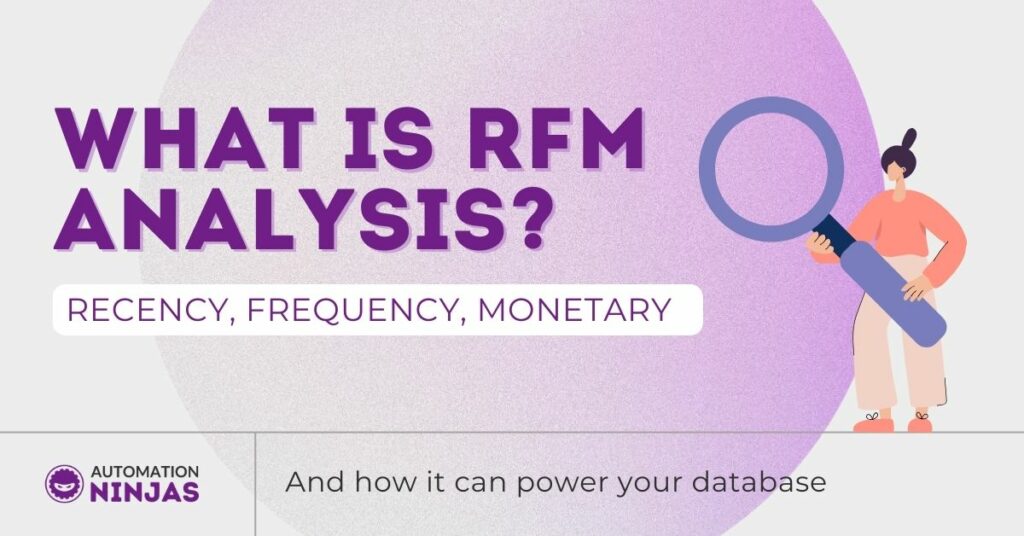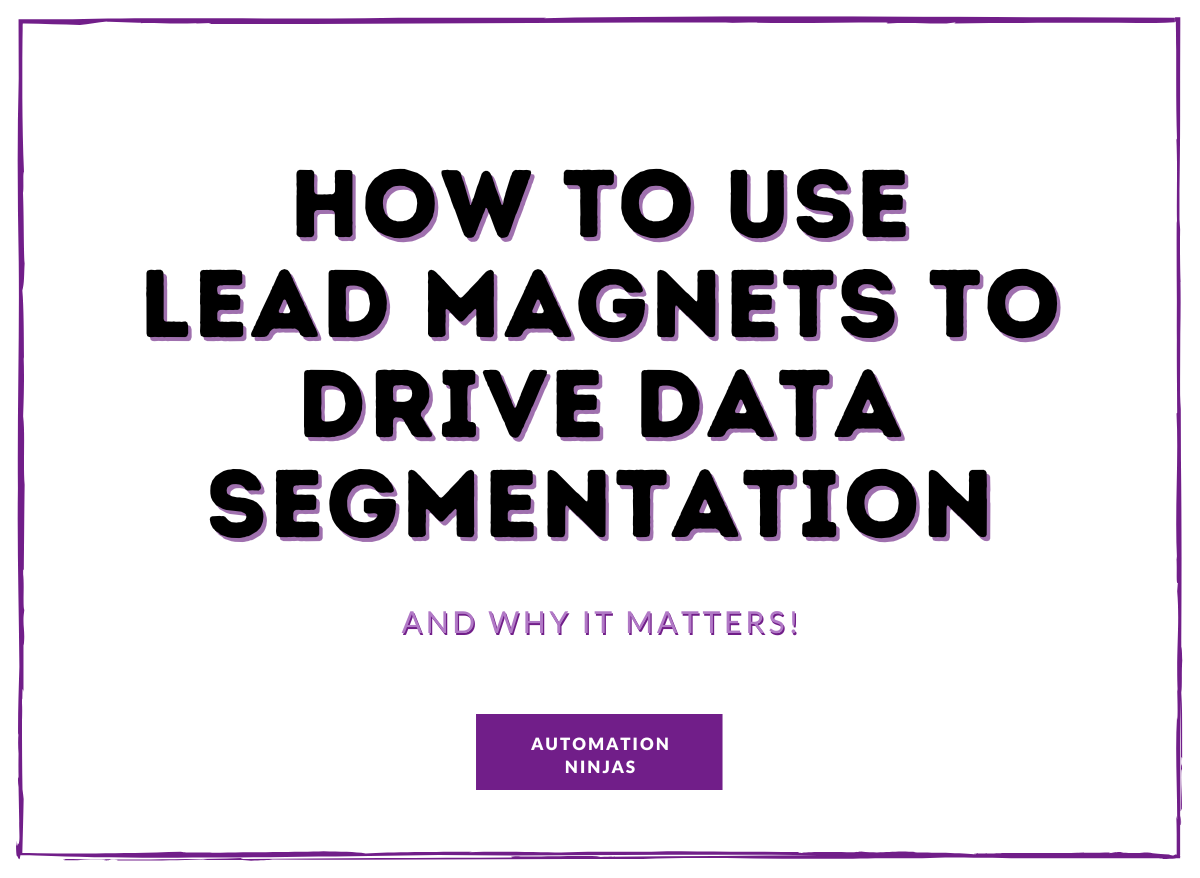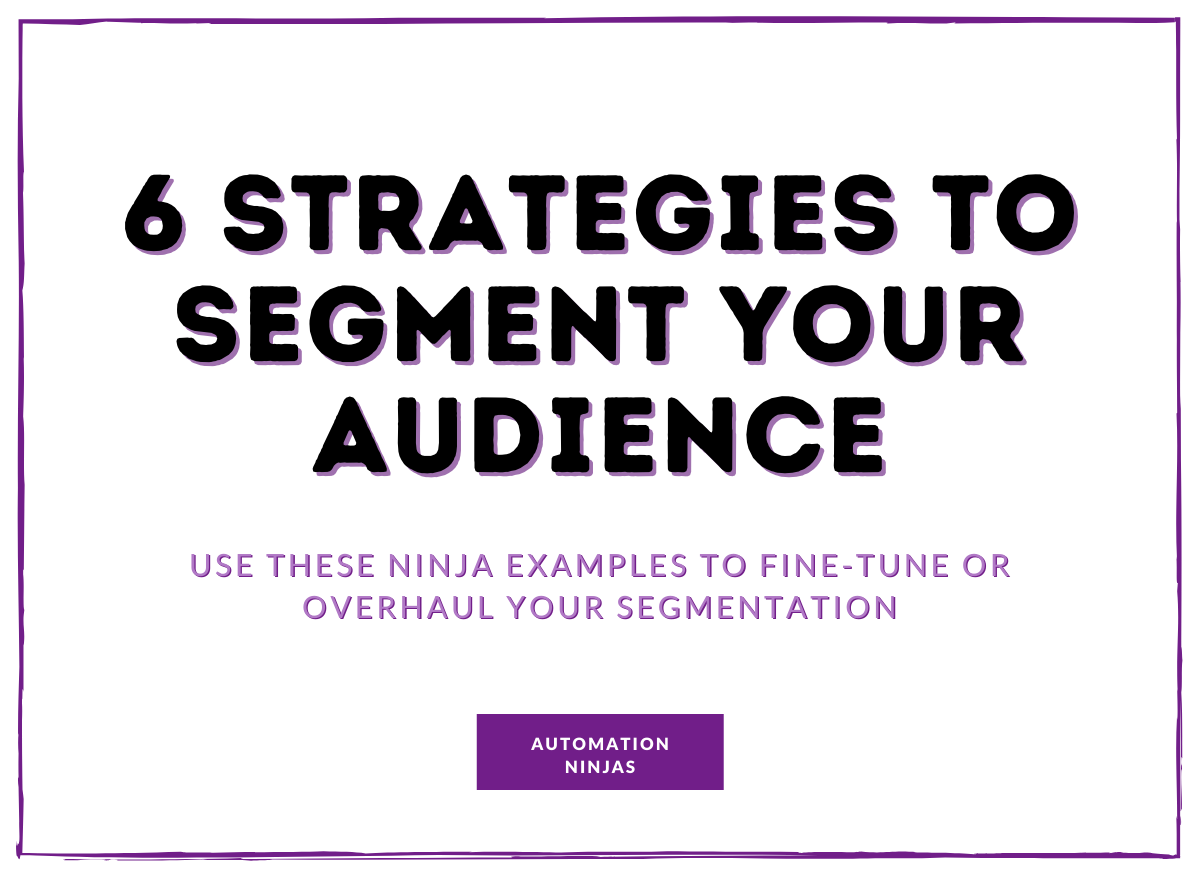AUTHOR: Kenda Macdonald
As a dedicated consultant, I specialise in elevating businesses through top-tier consultancy, fueled by a deep understanding of buyer psychology cultivated over years of experience. My expertise lies in crafting marketing and sales strategies that propel businesses to new heights by leveraging insights into the buyer brain. As a bestselling author, public speaker, and strategist, my passion for decoding human behavior drives me to innovate and deliver unparalleled results. I've designed a methodology adaptable for all types of businesses, ensuring transformative customer journeys and experiences.
Not all customers are created equal!
As much as we’d love to target our energy and resources on all the customers we can - sometimes our resources don’t quite match that desire.
But how do you figure out who your most loyal and profitable customers are?
RFM analysis is a popular model used within e-commerce that profiles your customers' behaviour, segmenting them into personas that allow you to customise marketing offers and campaigns accordingly.
In this blog, we’re exploring RFM analysis and how it can be used to power your database for higher profitability.
Related content: 3 behavioural segmentation examples
What is RFM Analysis?
So, let’s get into a definition first…
At its core, RFM is a data-driven customer segmentation approach, and you know how much we love data.RFM stands for Recency, Frequency and Monetary value, and it’s essentially a way to segment purchasing in e-commerce based on how recently someone purchased, the frequency of purchase and how much that customer is worth to you.
Recency refers to how recent the customers last purchase was. Customers who have recently made a purchase are more likely to purchase again. Recency can be measured in days, weeks or years depending on the product.
Frequency refers to how often that customer bought in a given period.
Monetary refers to much money a customer spent in a given period. Those who spent more are more likely to do so again in the future, and it’s important to understand high value customers.
Using these metrics, you can quantitatively rank and group customers based on how recently they bought and how much they are worth to your business. A score is allocated to each customer, with rankings usually on a scale of 1-5 (the higher the number, the better the result). Customers most valuable to your business would receive a top score in every category.
These three RFM factors can be used to reasonably predict how likely (or unlikely) it is that an e-commerce customer will buy from you again. It's also how you can segment your database into levels and nudge them to the next level.
It’s based on the principle that someone who has done recent and frequent business with you will have your brand at the forefront of your mind when it comes to their next purchase. And is founded on the fact that 80% of your business comes from 20% of your customers - and it allows you to pinpoint who your most valuable customers are so you can target them.
What are the Advantages of using RFM?
As many e-commerce businesses will know, getting first-time customers is hard, but it’s only half the battle.
On average, only 20% of first-time online buyers will ever make a second purchase, which means that you will spend a lot of time and money acquiring customers who never buy from you again.
But it’s incredibly important for the profitability of your business that you not only get customers, but you get them to come back. In fact, if you can get just 10% of your customers to return, you could as much as double your revenue.
Using RFM analysis means that you can determine who is most likely to buy again and target them via campaigns. Equally important, you can see who is least likely and implement a re-engagement campaign.
And the great news is that if you can get a customer to buy a second time, it’s much more likely they will become loyal and repeat customers. So understanding where your audience stands and how to nudge them into the category of repeat customers is incredibly important.
Ultimately it’s about personalisation, allowing you to segment and drive customised, data-driven offers to the right people at the right time.
For example, if you see that 80% of your audience only buys once, you can launch an email campaign to encourage them to buy again.

RFM Campaign ideas & Examples
RFM analysis is something that we’ve helped countless clients implement to automate a series of campaigns designed to nudge customers to the next stage.
One of the easiest ways to implement RFM in your marketing campaigns is to separate out your Recency, Frequency and Monetary value into levels.
This allows you to analyse your customers and their spending behaviour.
For example, let’s look at Frequency. Encouraging repeat purchase is one of the easiest ways to increase your profits. Most businesses that take a deep dive into their Frequency rates will find that the bulk of their customers only purchase once.
By segmenting out the levels of Frequency and the customer lifetime value of each of the groupings, you can forecast how your margins would change in you nudged people through the levels. Below is an example of how we have filtered a campaign for Frequency, sending each level into a different series of emails that nurtures and nudges them to their next level of purchase.
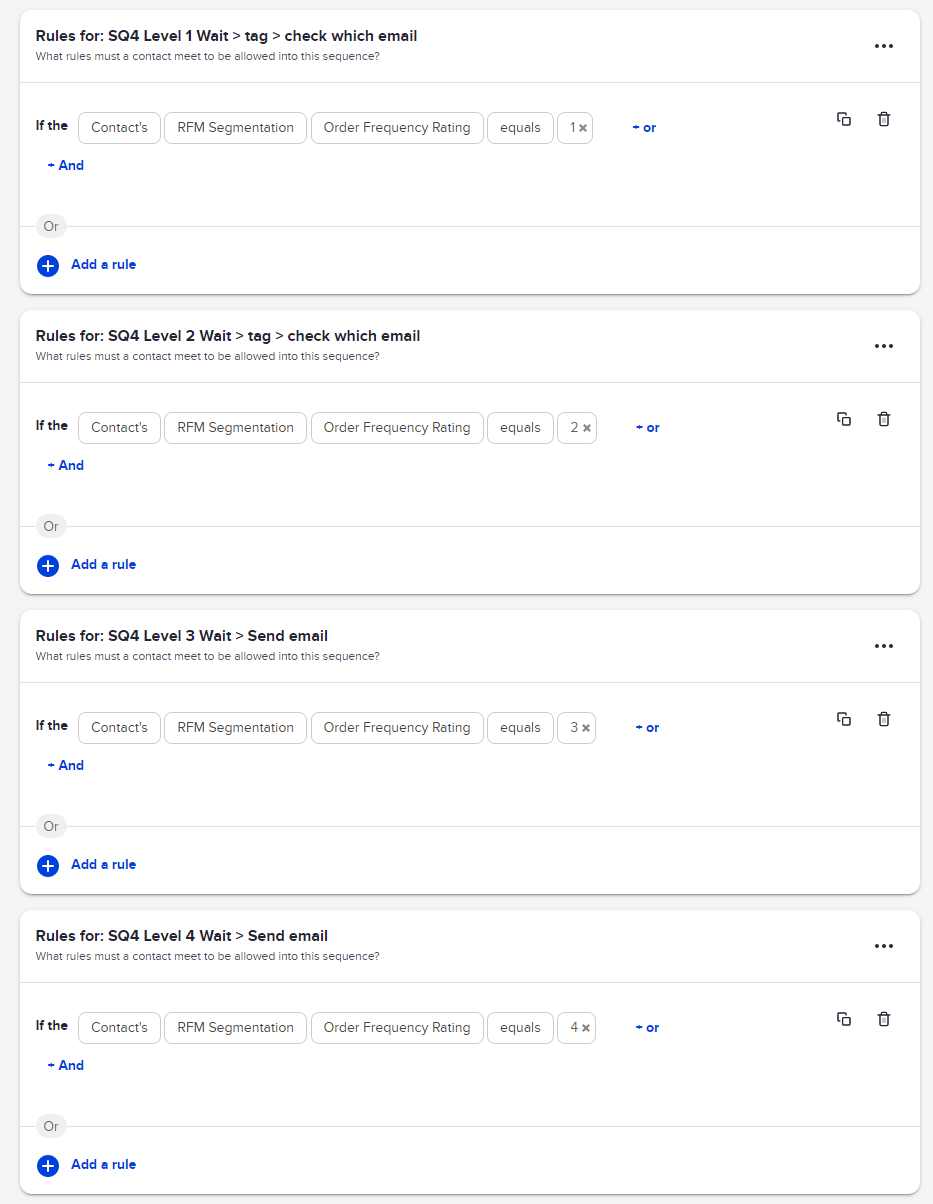
And of course you can do the same for Recency and Monetary value. Below is an example of that segmentation, as well as the campaign flow that it goes through.
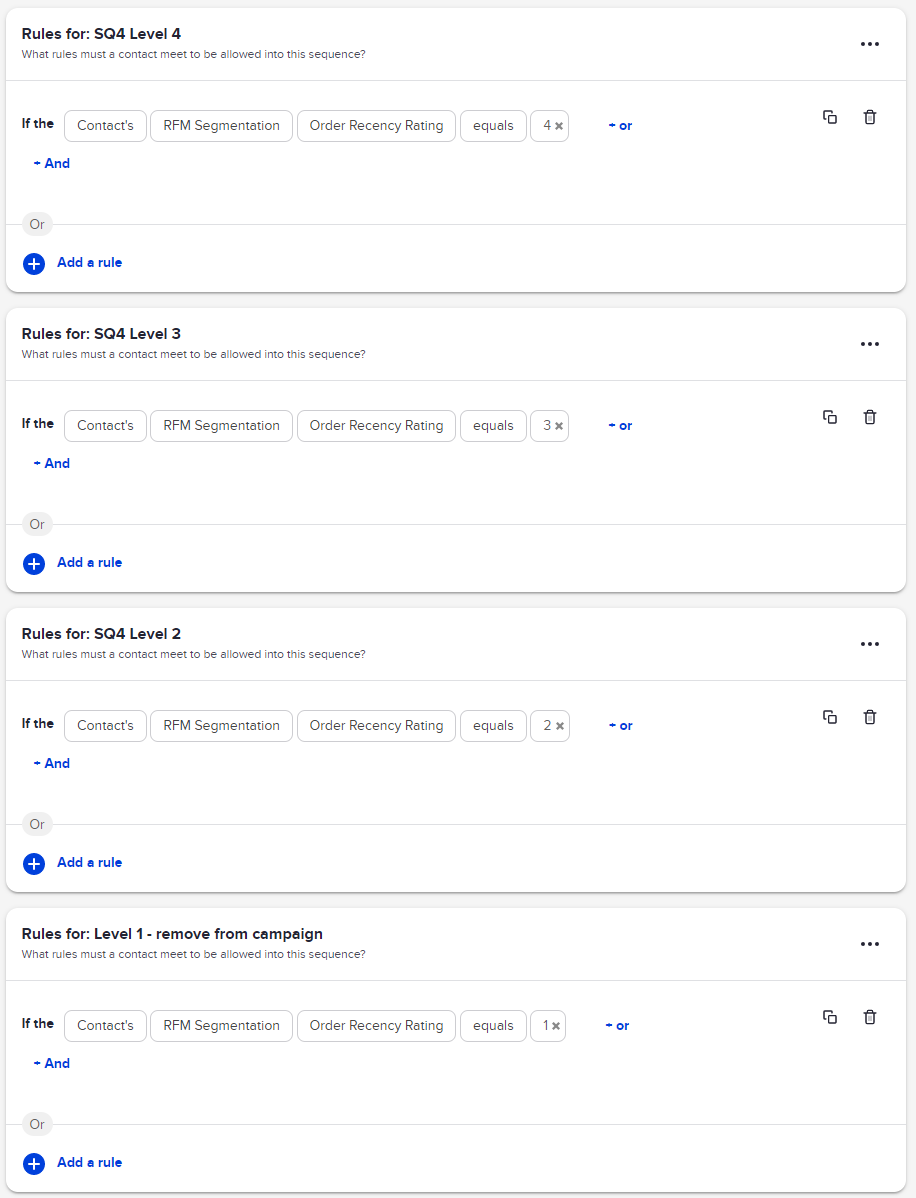
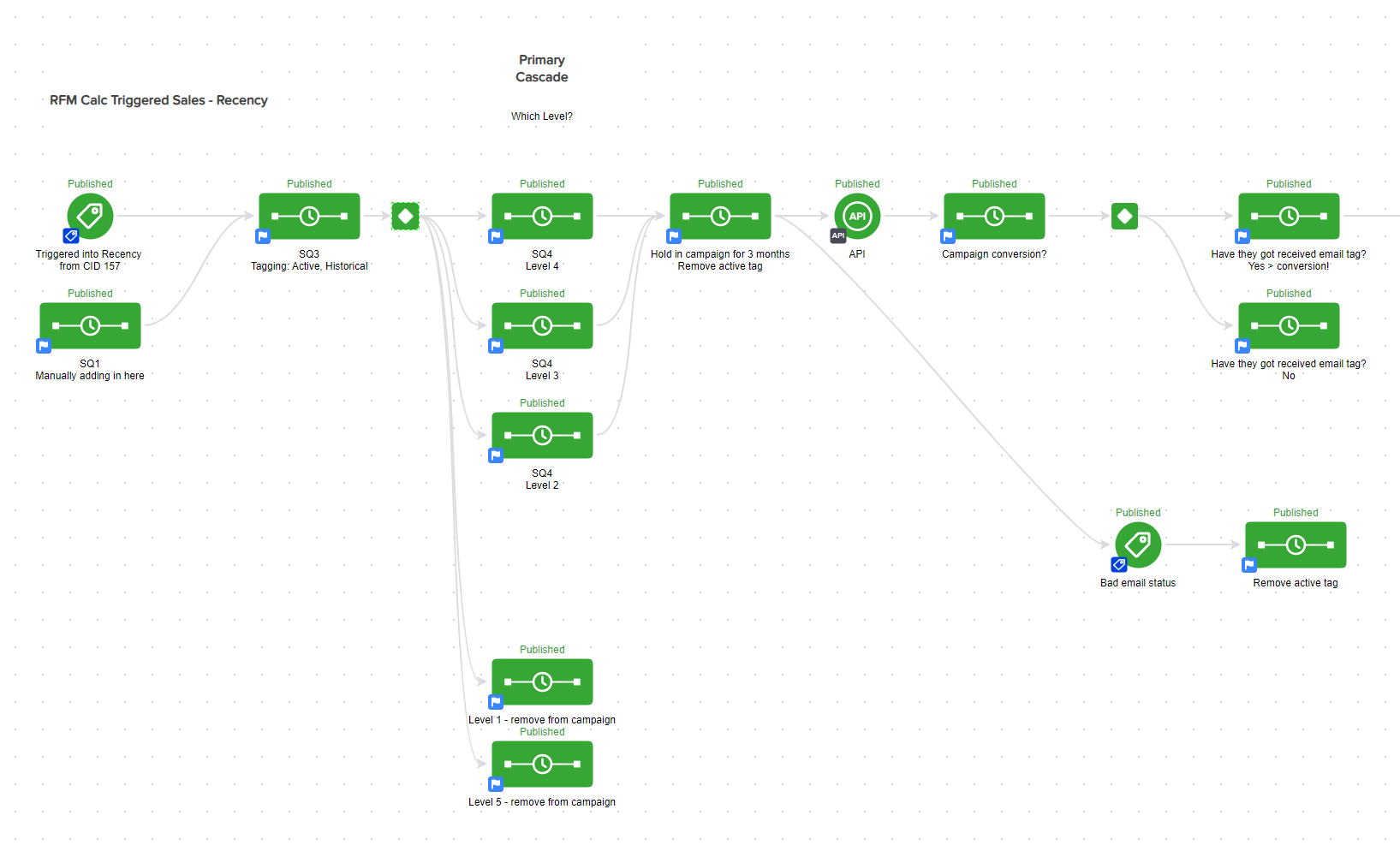
So not only do we learn about purchase behaviour when we segment in this way, but we increase customer lifetime value by nudging customers to the next stages.
How can you Automate RFM?
Of course, with automation, we can ensure that this happens without too much time or effort on our part (and that’s the beauty of marketing automation).
RFM analysis allows you to identify and segment clusters of customers with similar values.
Most email marketing systems allow you to segment your email list by recency, frequency and monetary value and create an individual list. From there you can send them the right emails at the right time - continuing to nurture your relationship and push them towards further sales.
Not only that, it allows you to identify those who have fallen off of the purchasing bandwagon. You can set them up in automated long-term nurture series, that nudge them along the customer journey, remind them you still exist and that you can still solve a problem for them. It’s a great way to land in the inbox of your customers that aren’t so profitable and turn them into repeat customers.
Need help with your RFM analysis?
At Automation Ninjas we’re masters at powering your database, but using our knowledge to automate RFM.
It allows you cleverly segment your database in a way that enables you to identify your most loyal, and profitable customers as well as nurture those who might not have a high customer lifetime value.
It’s something that every e-commerce business should be doing, and moreover, automating to save you time and make you more money.
Get in touch with the Automation Ninjas Team if you need help creating a powerful database for your e-commerce team.

